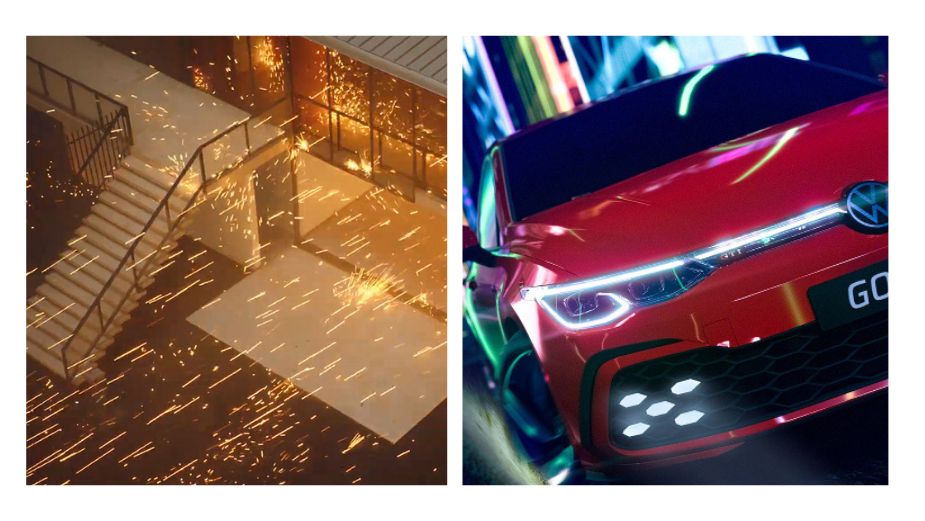
How to Stay Creative in a Rapidly Changing World

The Black Summer bushfires burned down 2,448 homes, while the floods earlier this year rendered over 5,000 uninhabitable. In between the two events, Covid sent Australia into the most intense lockdown since at least the Spanish Flu. The last five years have been a time of upheaval for many Australians, but it also enabled some of the most ground-breaking commercial creativity to shine and stand out.
At this year’s This Way Up festival, a Google session on The Work Behind the Work took a closer look at campaigns that responded to these crises and succeeded in grasping consumer attention more deeply and profoundly. The campaigns on One House to Save Many by Suncorp and Leo Burnett; and GTI Hijack by Volkswagen and DDB Group Australia stood out. Both campaigns turned crises into opportunities to help socially and recreationally.
One House to Save Many focused on building a model for a more weather-resilient house. It was born directly out of the “severity of the weather events that we're experiencing, which are only getting more frequent and more severe”, according to Suncorp chief marketing officer Mim Haysom.
Mim made this point with a simple comparison; the area burned by the Black Summer bushfires, she explains, was “actually the same size as the entire size of the United Kingdom”. She described these weather trends as “leading up to a whole lot of communities in Australia becoming uninsurable”, which is where the one House campaign stepped in.
Working with the CSIRO, James Cook University and Room 11 Architects, Suncorp created a house which used the classic ‘Queenslander’ design as the basis for a newly resilient structure. The house has an open-plan interior to best observe an encroaching fire; it allows sacrificial guttering to offer protection from embers; and it’s accompanied by two outdoor water tanks, acting as a drinking and firefighting supply. Further design features protect against flood and cyclone damage by diverting debris and redirecting high winds.
The work was promoted through a 30-minute documentary which aired on prime-time television, while a website with dedicated content and renderings allowed customers to view the features of the house. The project became a point of discussion and development with governments at various levels. In Mim’s words, Suncorp is “continuing to work on how we innovate next; and on how we support customers and communities to make them more resilient moving forward”. She concluded the session by highlighting the importance of campaigns that respond to societal realities and embrace the chance to “create work that works not just for an organisation in terms of brand and business outcomes, but in real tangible impact as well”.
GTI Hijack by Volkswagen and DDB Group Australia, on the other hand, may not have had its origins in broader social changes for Australia, but it would not have functioned without them.
The campaign, explains DDB creative director Tim Woolford, was born from dissatisfaction with the sheer sameness of performance car ads. “Everything looks like that,” he says, describing the global commercial for the new VW Golf GTI. Instead, the team at DDB focused on trying to cut through the block of similarly styled car videos, and eventually hit upon the idea of selling that very effort as their creative campaign.
The team developed an in-browser game where consumers could race a Golf GTI after scanning a QR code shown on their television. In this way, they could “hijack” the entire ad break and keep consumers’ sole attention on the VW over any other car ads that might follow the initial commercial.
But there was a snag. “An app would kill this idea straight out of the gate,” says Tim. “Having to educate an audience to download an application to then be able to play a game that came on TV; it was just never going to happen.” It is because of this hurdle that Tim goes on to say the team was “both cursed and grateful” for Covid-19, because it “taught the world that QR codes are not the ugliest thing in the world”.
“If it wasn't for the humble QR code, this again, would have never happened. People were at home during lockdown. Like me, they were watching a lot of TV. And they were scanning lots of things with their phones and scanning lots of QR codes. So, there was this sort of cultural behaviour that had been established… Being able to configure and customise the GTI from home was also a big tech for us. And in the context of Covid, people not being able to visit dealerships was part of the sell method,” says Tim.
These campaigns responded to serious modern challenges in different ways. One was earnest, one more frivolous – but the key trait shared was a willingness to embrace the new status quo and to grow creativity out of that. As Tim puts it in his closing remarks, “It’s kind of corny, but it’s true that you miss 100% of the shots you don’t take. If you take the opportunity, whatever the shape it comes in, the gold is truly at the end of the rainbow.”













